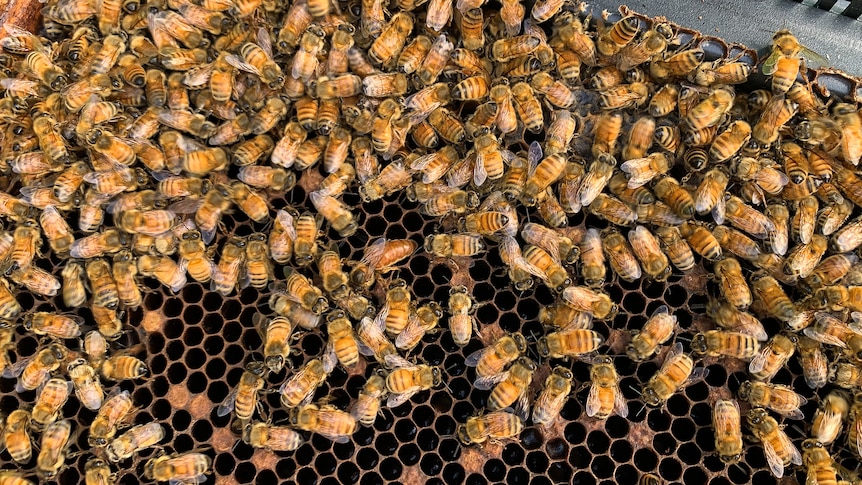The New South Wales Agriculture Minister says as many queen bees as possible will be moved from a newly expanded varroa mite eradication zone to protect a national bee breeding program.
Key points:
- Varroa destructor has been detected at 59 properties across NSW
- The state government says no infections have been detected at Tocal
- A breeding program co-manager says the program can be rebuilt if the bees have to be destroyed
Varroa mite, which has devastated bee colonies around the world, has been detected at Butterwick, less than 10 kilometers from Tocal Agricultural College in the NSW Hunter region.
The NSW Department of Primary Industries-run college houses the national honey bee genetic improvement program, which supports beekeepers across the country.
The latest varroa mite detection takes the state’s total to 59, but Agriculture Minister Dugald Saunders has stressed that the mite has not been found at Tocal itself.
“[It] does not have infected hives — they’ve been monitored very regularly, but it does now fall within one of those red zones, so it is in an eradication zone,” he said.
loading
Mr Saunders said while the nearby detection was unfortunate but not completely unexpected, with 16,000 hives now having been inspected.
Mr Saunders said protocols had been developed over the past month to safeguard and move “some really, really high-value bee genetics that are housed at Tocal”.
“It will be as many as is feasible without feeling like we’re putting anyone else at risk,” he said.
“It’s not exactly formalized yet, but it would essentially mean that there would be a process where some bees could be moved in a small group, as in the queen bee with some of her nurse bees.
“[This would be achieved] by individually inspecting each and every one of those to make sure that they’re free of varroa mite and then moving them in a restricted space … to somewhere else to try and maintain those genetics.
“That would also include other queen bee breeders in that area.”
‘bump in the road’
The aim of the national bee breeding program is to refine genetics and make bees more productive and less susceptible to disease, within Australia’s “unique environment”.
Elizabeth Frost, the technical specialist who co-manages the Plan Bee program, says the operation could be rebuilt if bees need to be eradicated for the greater good of the industry.
“We’re in a critical time in the response where it’s still possible to eradicate this pest and we need to give it our all to make that happen, because it’s the most globally damaging pest for honey bees,” she said.
“Even if the Tocal Plan Bee program can’t go ahead… it’s still represented around the nation.
“In the past few years of running this program we have developed the national database and the data we’ve generated from this population, and also genotyping … will live on beyond this population in the red zone.
“I couldn’t be more proud than that.”
Mr Saunders said the origin of the varroa mite outbreak was still under investigation and said the situation was “a small little bump in the road of genetic research”.
.
